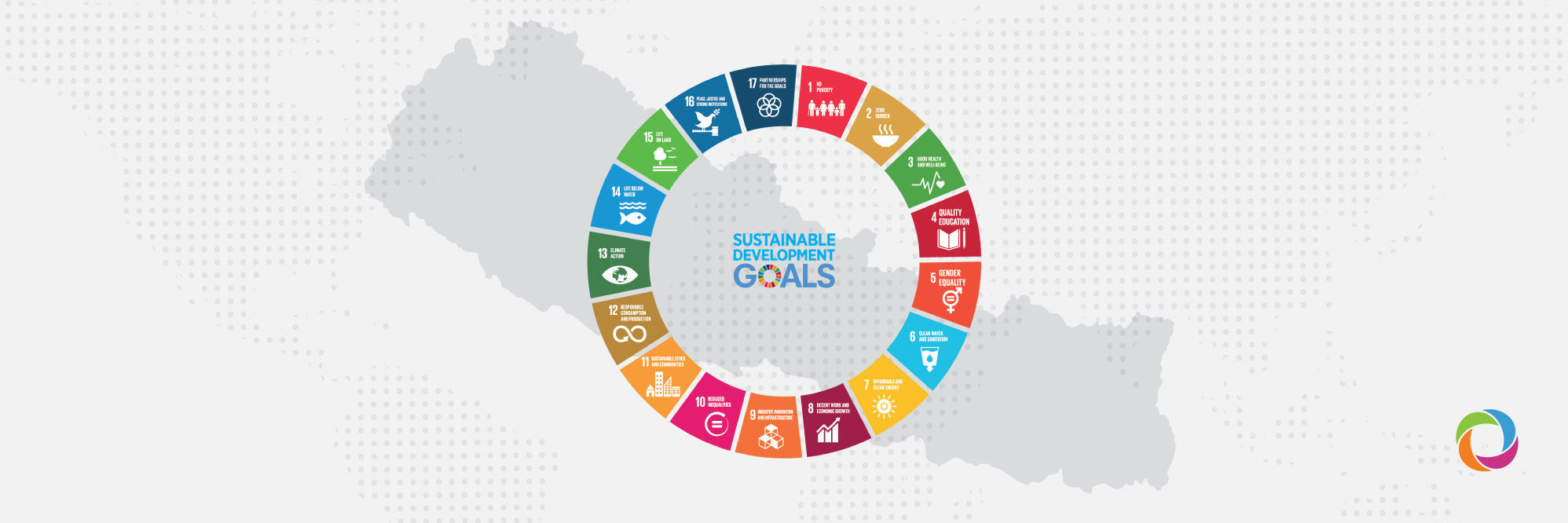An assessment report of progress towards attaining the Sustainable Development Goals (SDGs) released on February 7 by the National Planning Commission (NPC) of Nepal, shows that Nepal’s Multi-dimensional Poverty Index (MPI) has dropped to 28.6% whereas the proportion of the population below the national poverty line stands at 18.6%. The assessment reveals that immediate access to justice and institutional capacity for the fair dispensation of justice still requires more attention.
The assessment carried out by the NPC with technical and financial support from the UNDP Nepal and the European Union through the project, Accelerating Implementation of SDGs in Nepal, presents a comprehensive analysis of Nepal’s efforts during the first four years (2016-2019) of the implementation of the SDGs evaluating the achievements against 169 targets and 479 indicators.
Launching the report and stating that the 15th National Plan of Nepal is fully aligned with the SDGs and provides a clear roadmap towards prosperity over the next 25 years, Dr. Pushpa Raj Kadel, Vice-Chair at the NPC, said, “The roadmap includes graduating from least developed country status by 2022 and achieving the SDGs by 2030 leading to the realization of Nepal’s long-term vision of a Prosperous Nepal, Happy Nepali.” The NPC is preparing a robust policy to address the negative impact of the COVID-19 pandemic, he added.
While the assessment reveals that Nepal is gradually progressing in the right direction to attain the SDGs, it has also identified certain critical areas for improvement such as databases and institutional mechanisms.
Although regional and ethnic differences continue to exist, the assessment also shows a gradual decline in the levels of poverty nationwide. Analyzing that this achievement can easily be affected by the impact of COVID-19, the assessment recommends that the structural roots of poverty are addressed through programs that will enable increased access to and control over their resources and assets by the poor.
The assessment shows an overall reduction in violence as well as a decline in child trafficking but aggression against children remains high and the assessment indicates no improvement in the situation of child labour. Little progress has been achieved regarding violence against women and children although cases of child marriages have been declining.
Whereas transparency scores have not improved, the proportion of decision-making positions held by women in public institutions is growing. Women’s labour force participation rate overall remains much lower than that of men and although gender empowerment measures show improvement, inequality in wages continues.
The Global Hunger Index score for Nepal indicates a serious level of hunger with the malnutrition situation failing to improve together with the occurrence of stunting, wasting, underweight, and anemia among women as well as children under five remaining at precarious levels. Similarly, maternal mortality in Nepal still remains high but the progress made on the proportion of births attended by skilled health personnel is satisfactory.
Although there has been significant progress towards inclusive quality education, rapid improvements are still required mainly in learning outcomes, quality of teaching, expansion of vocational education, and general literacy and numeracy.
The assessment presents a grim picture of the tourism sector in Nepal and forecasts that the COVID-19 pandemic will only worsen this situation.
There exists a huge infrastructure gap with the road density increasing but remaining inadequate and growth in the industrial sector remains slow. The report shows that the natural habitats of key flagship species have been improved leading to an increasing number of tigers and rhinos but unfortunately there has been no progress on combating desertification and the restoration of degraded land.
Meanwhile, the proportion of squatter population remains low while households living in safe houses has improved. The parameters for urban air pollution show that the situation has worsened.
- Macroeconomic stability during the period with about 6.8% annual economic growth and reduced income poverty level to 16.7%
- The suicide rate is higher at 17.8/100,000 population which indicates the extent of underlying mental health issues
- There has been progress in school enrolments (primary 97.2 %), the ratio of girls to boys, and in primary completion rates (89.5%) and continuation rates. However, these achievements remain below expectations
- Although basic water supply coverage is 88%, only 21% of the population has access to safe drinking water
- There has been a significant improvement in sanitation with 85% of the population using toilets
- The proportion of the population having access to electricity is 88%
- The annual growth rate of the real GDP per capita has remained above 5.6%
- Informal employment is over 81% in the agricultural sector
- Research and development accounts for only 0.3% of the GDP
- The Gini coefficient of consumption inequality stands at 0.30
- The use of fossil fuel as a percentage of total energy consumption has increased and remains at 15%
- 68 local adaptation plans and 342 community-level adaptation plans for climate action are under implementation
- The birth registration rate of children under five years remained at 77.2% with civil authority
- Domestic resource mobilization capacity has improved as government revenue comprises 24.8% of the GDP and 74% of the domestic budget is financed by domestic resources
Concluding that progress in attaining the SDGs can be assured only through an effective partnership with all stakeholders, the assessment recommends steps be taken to formulate concrete strategies to mobilize and facilitate multiple stakeholders in the achievement of specific SDG targets. As the COVID-19 pandemic has the potential to reverse the trends in most of the SDGs, it is essential to realign strategies for the attainment of these to reflect the new normal, the assessment recommended.

